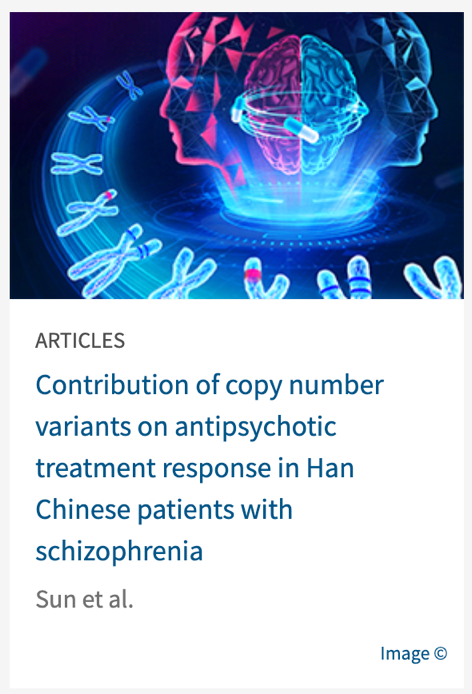eBioMedicine ︱Prof. Weihua Yue: Contribution of copy number variants on antipsychotic treatment response in Han Chinese patients with schizophrenia

Introduction
Schizophrenia (SCZ) is a complex disease with highly heterogeneous clinical phenotype including hallucinations, delusions, disorganised thinking and speech, reduced emotional expression, and cognitive deficits.1 Antipsychotic drugs (APD) are the mainstay of treatment in clinical management of schizophrenia. However, the APD response can vary significantly among individuals, and approximately 1/3 of individuals diagnosed with SCZ experience treatment-resistant psychotic symptoms.2,3 Advances in common genetic variants have led to some progress in understanding the inter-individual variations in APD response, but the genetic rare, highly penetrant and deleterious risk variants have not been fully elucidated.
Studies on genomic copy number variants (CNVs) have established a role of rare genetic variants in the etiology of SCZ.4 These findings on disease-associated CNVs identified significant risk for neurodevelopmental and psychiatric disorders5, 6, 7 and an increased burden of CNVs in cases of SCZ.8,9 The impact of CNVs on APD efficacy has also been noted, such as the genome-wide burden of CNVs,10,11 schizophrenia risk CNVs11, 12, 13 and CNVs in relation to cytochrome P450 genes,14 which affect enzymatic activity and individual drug response. While some SCZ-associated CNVs (SCZ-CNVs, i.e., duplications of the 16p11.2 and 15q11.2-q13.1 regions, and deletions of the 22q11.2) have been reported to be enriched in treatment-resistance cases,11,12 a major limitation is the inability to directly assess the association between unknown CNVs and APD efficacy.
In this study, we presented the genome-wide association analysis of CNVs in relation to APD efficacy in patients with SCZ of Han Chinese ancestry and assessed the impacts of previously implicated SCZ-CNVs and CNVs intersecting with APD target genes on treatment efficacy, using 6-week acute phase treatment data from a large randomised controlled trial. The interaction and joint effects between rare CNVs and common single nucleotide variations (SNVs) on APD treatment response were further explored.
Original Link: https://www.sciencedirect.com/science/article/pii/S2352396424002305?via=ihub